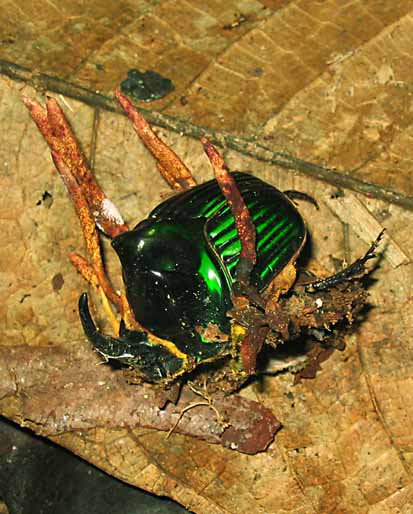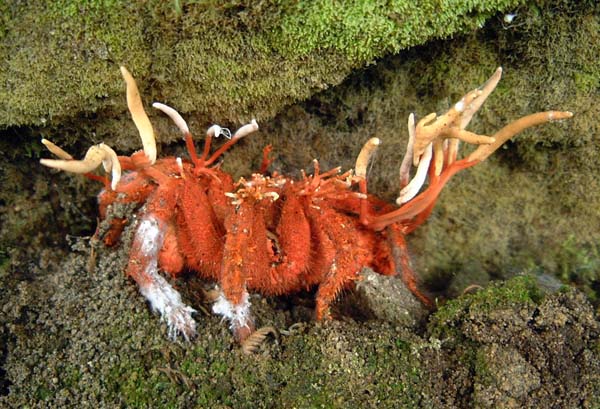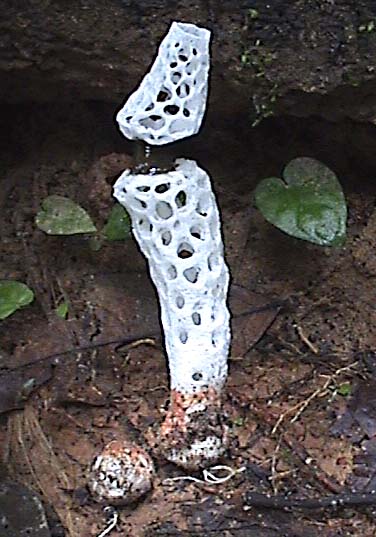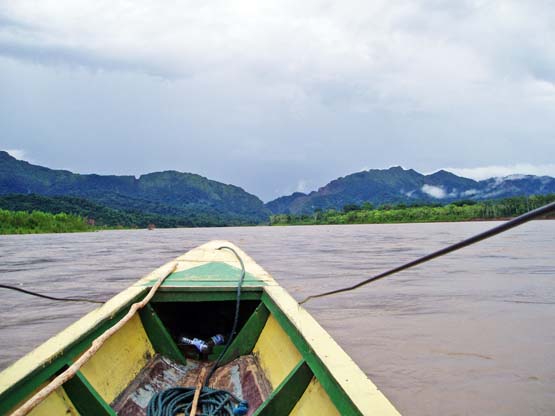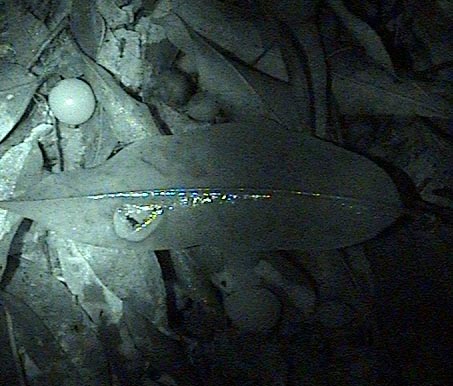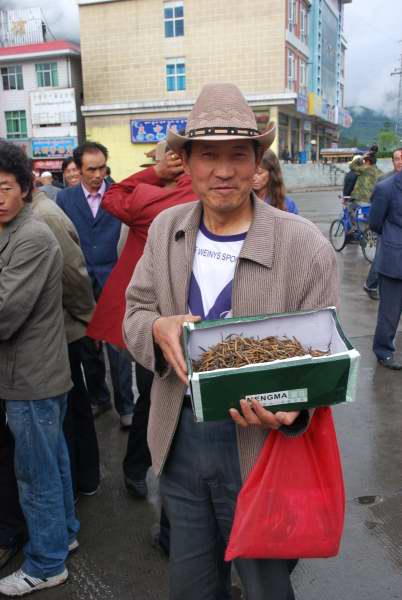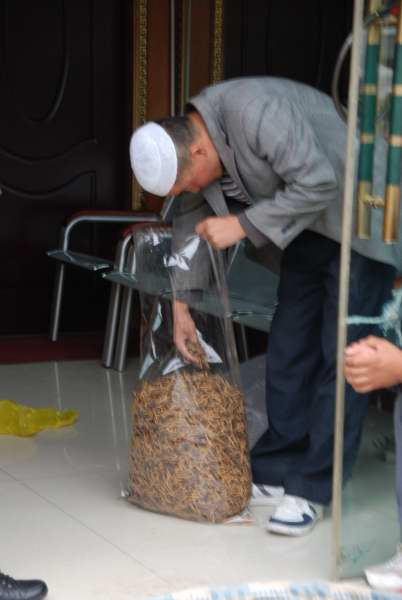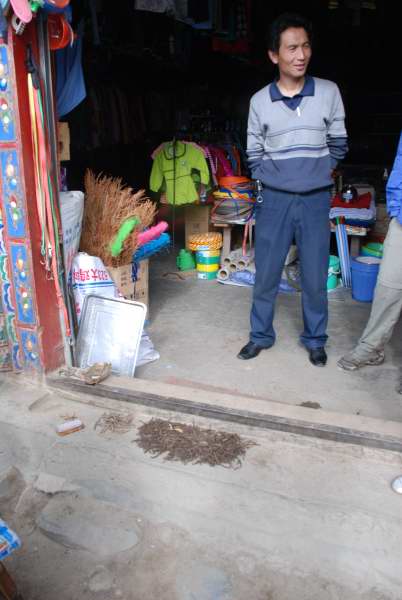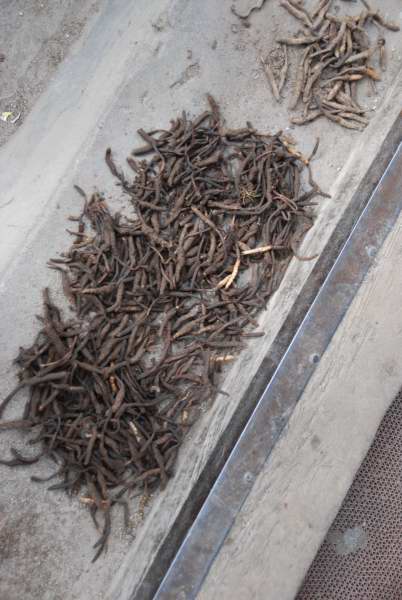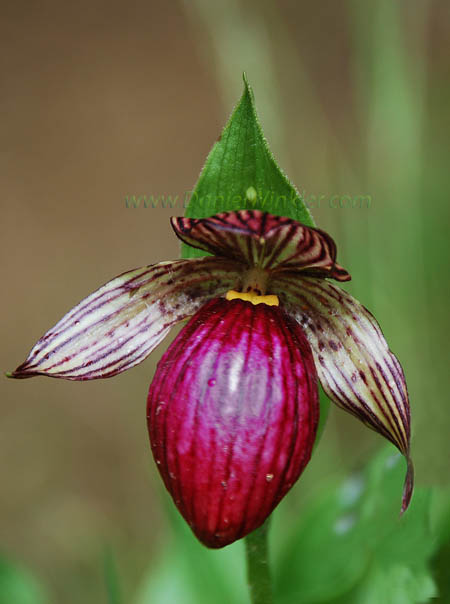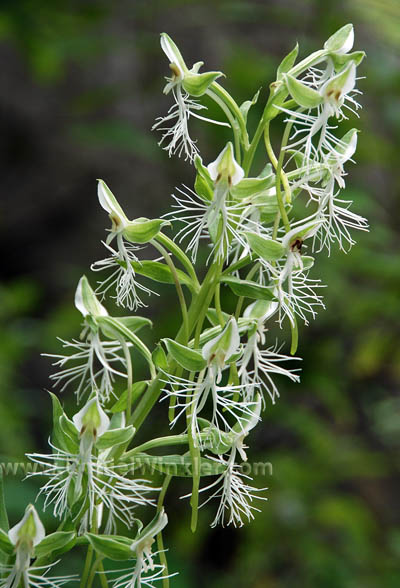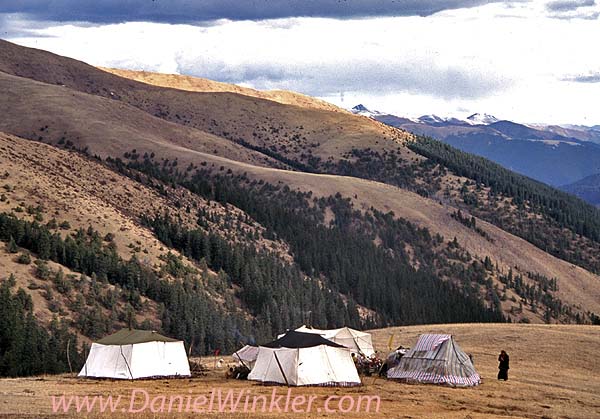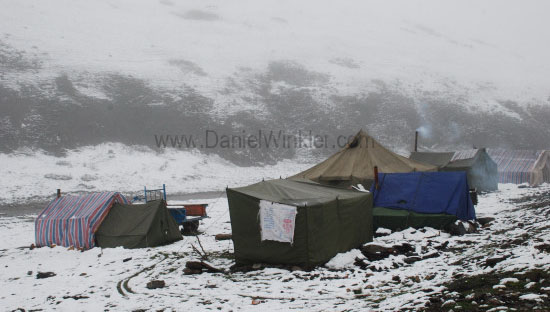
Not much is happening once it snowed. Collectors just hang out and have to kill time waiting until the snow melts. The day before the snow was already a day of rest since it was the 15th day in the Tibetan calendar, many collectors take off this holiday from collecting.
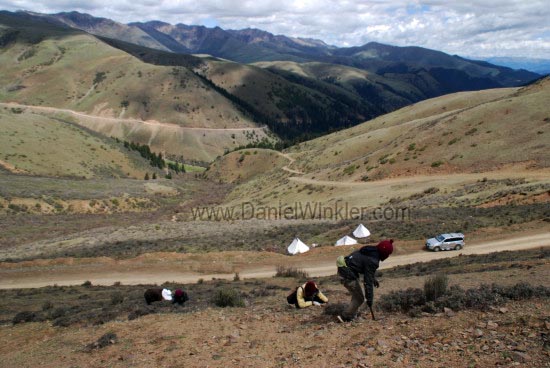
Dorje, Thubten, Tashi Tsering and Drolma scanning the ground for
bu. These guys are off course fully licensed collectors at CNY600 per person, nearly USD100. Without license one is not allowed to collect Yartsa gunbu. As tourists we probably could not even buy a license and we are not there as competition interested in searching the mountains 12 hours a day for 5 weeks. So we just ask local
bu hunters if we could accompany them and usually we are received warmly. If we find some
bu ourselves we buy it from them, but here they found ten Yartsa gunbu while we found only one.
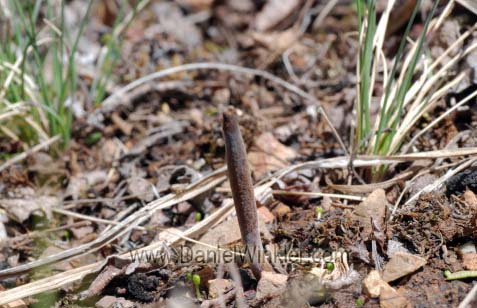
We found our specimen in 4650m / 14,500 ft ! 2010 seems to be an excellent year for
Ophiocordyceps sinensis on the Tibetan Plateau.
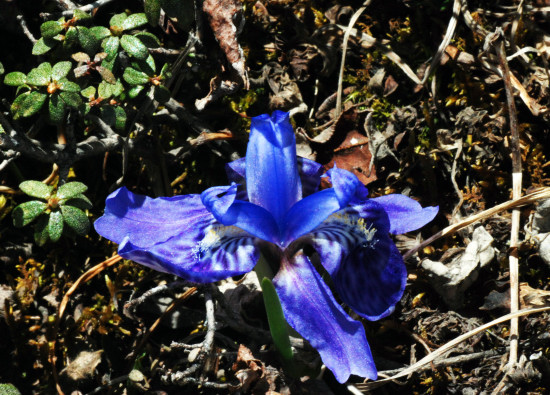
Close by grew this beautiful Iris, probably
Iris ruthenica var. nana.
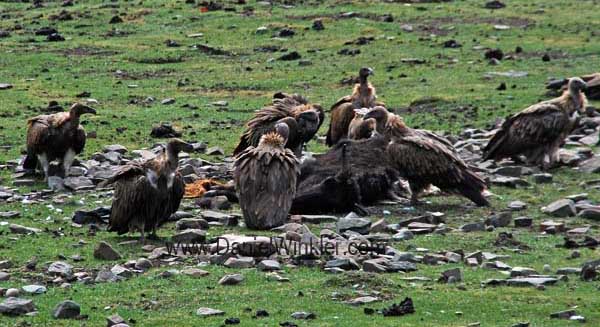
Vultures feeding on a yak carcass. We were awed watching them walking and hopping up the slope. Their bellies were apparently too full to allow them a take off in the valley ground without gathering momentum by running downhill.

Prices are higher in 2010 than in 2009. Maybe that is the reason that these Yartsa gunbu dealers are smiling in Litang.
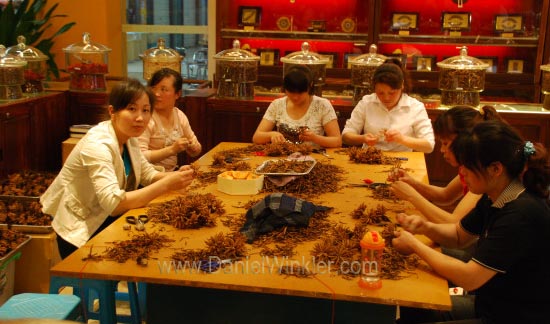
"Chongcao" being processed in a high end store in Chengdu. Prices here ranged from CNY 20,000 per kg for stromata only (none of the highly desired insect parts) up to CNY 360,000 per kg for the fattest, finest caterpillar fungi.
"Kar Sha" - Agaricus campestris
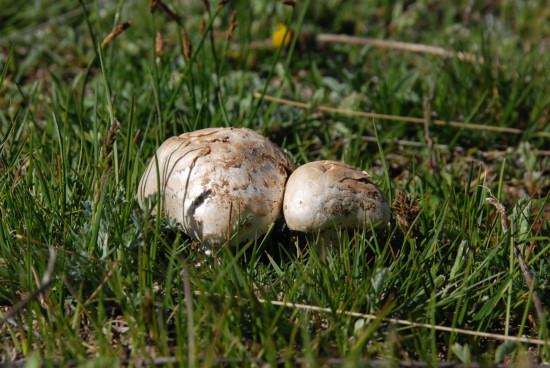
Kar Sha or Karpo Shamo, the "White mushroom" in Tibetan denotes several Agaricus species. It is a favorite edible in Tibet, nearly everyone knows, since it grows in pastures and around camps and villages.
Here
Agaricuscampestris is growing in the grass.
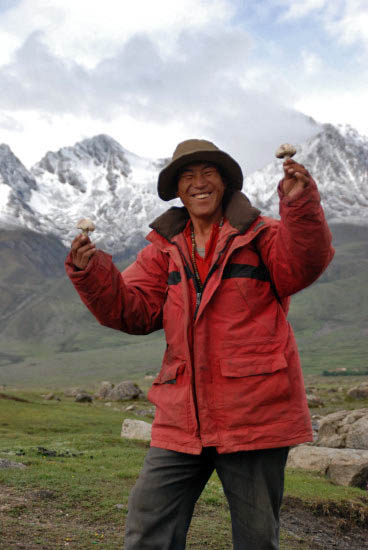
Loga showing some Kar Sha in front of Rongpatsa's ShedaMountains. I heard many stories about it and this time I had the chance to watch the preparation [see below].
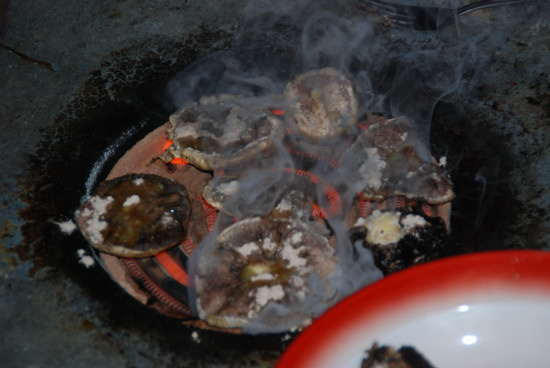
Kar Sha mushrooms, gills up without stems, are being roasted on an electric coil stove. Butter, salt and tsampa [roasted ground barley flour] is placed on top of the gills and cooks in the juice of the field Agaric.
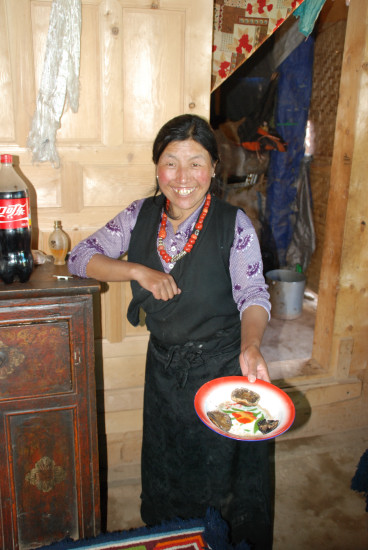
Dechen offers some of the cooked Agaricus campestris caps. They were very tasty!
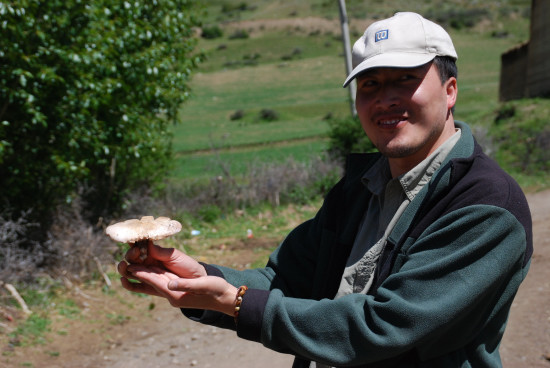
Our driver Mr. Song took off on his own hike while we looked for Yartsa gunbu. He found a big patch of
Lepista saeva = personata, the field blewit or blue foot. Some local Tibetans knew about its edibility, but it is by far not as known or common as Kar Sha,
Agaricus campestris.Caterpillar Fungus Hunt
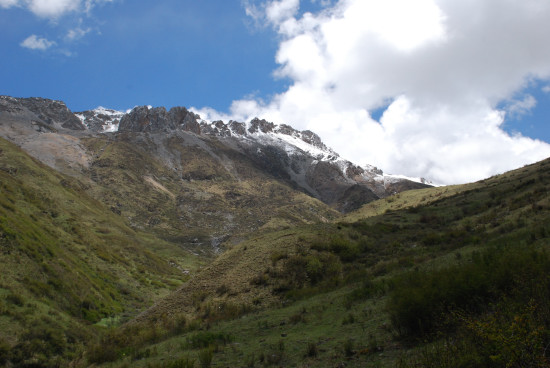
Yartsa Gunbu, caterpillar fungus habitat we searched with success after hiking in for several hours. Mount Dinu, probably 16000ft in the background.
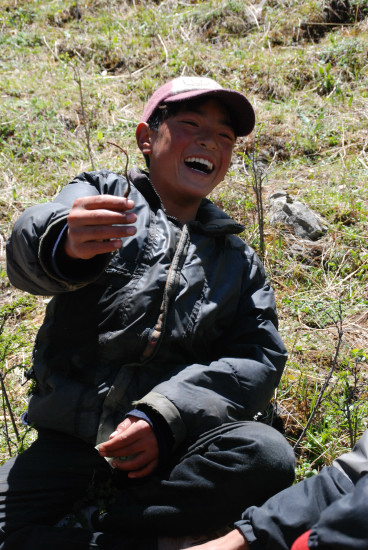
Tenzin found a nice Yartsa gunbu. The season here is nearly over, all O
phiocordyceps sinensisare sporulating [see below]

Yartsa gunbu hunters showing each other their bounty.
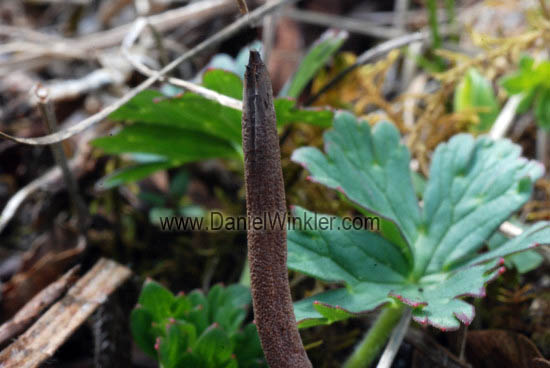
A late stage caterpillar fungus. Tibetans called it "tsar bu", overmature yartsa gunbu. While the fungus is sporulating the underground larva becomes soft and will shrink heavily whendrying and result in low value.
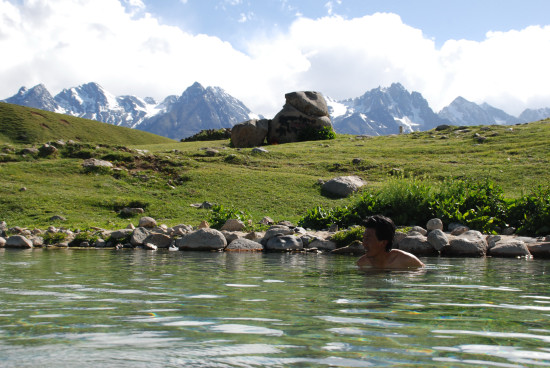
Perfect ending for a perfect MushRoaming day. Our guide Dorje relaxes in Rongpatsa's famous hot springs! What a view!
There are still spaces avaialble for the July 14- 27 Tour to Tibet.
Check out:
www.danielwinkler.com/foray_announce.htm